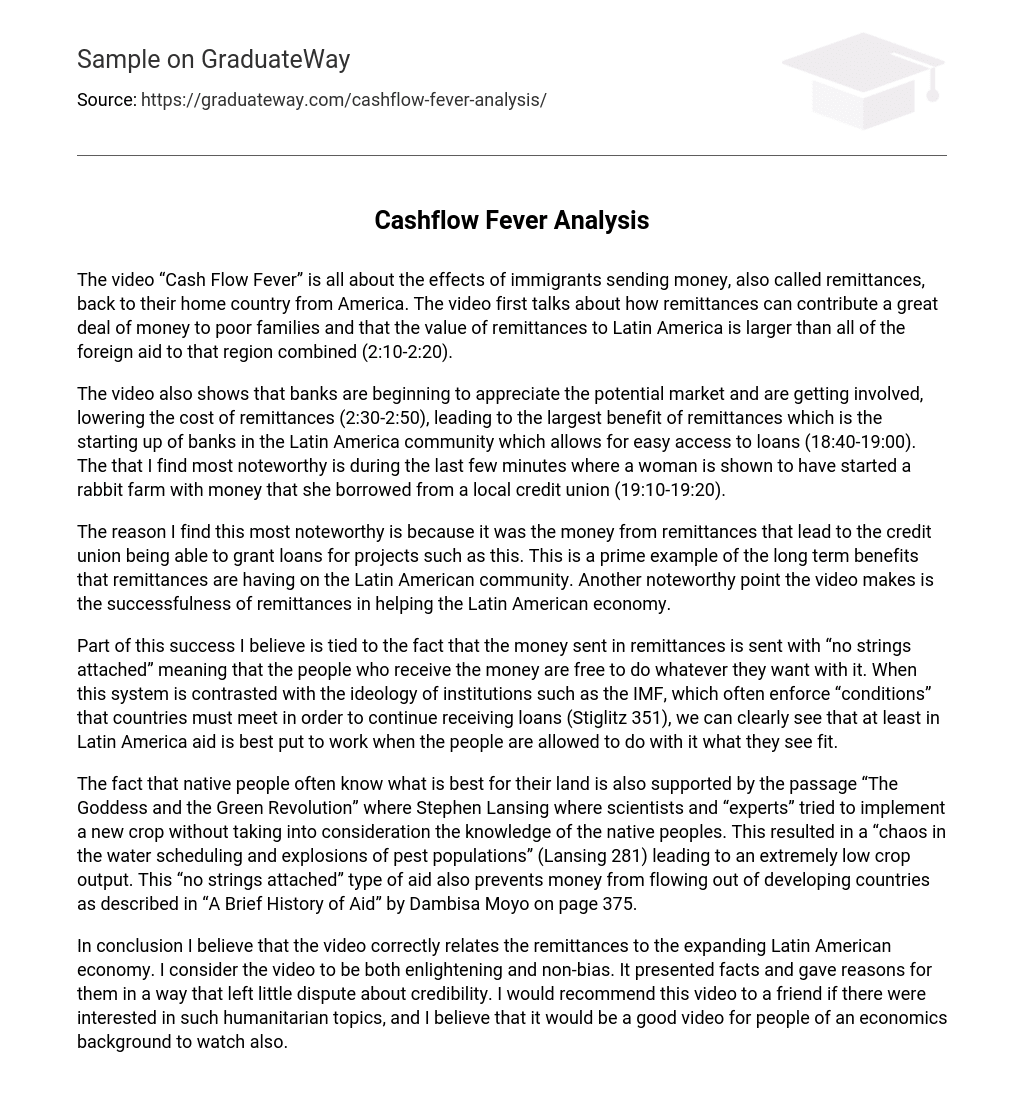The video “Cash Flow Fever” focuses on the impact of immigrants sending money, known as remittances, from America to their home country. It highlights how remittances can provide significant financial support to impoverished families. Additionally, the video emphasizes that the worth of remittances to Latin America surpasses the total sum of foreign aid received by the region (2:10-2:20).
The video demonstrates that banks are recognizing the potential market and participating, resulting in a decrease in remittance costs (2:30-2:50). Additionally, a significant advantage of remittances is the establishment of banks in the Latin American community, enabling convenient access to loans (18:40-19:00). Particularly noteworthy is a scene in the final moments where a woman begins a rabbit farm with funds borrowed from a local credit union (19:10-19:20).
The video focuses on two important aspects of remittances within the Latin American community. Firstly, it highlights how the money received from remittances has enabled the credit union to offer loans for various projects, as mentioned in the video. This showcases the lasting benefits of remittances. Secondly, the video emphasizes the positive impact of remittances in supporting and boosting the Latin American economy.
According to Stiglitz (351), our success can be attributed partly to the unrestricted nature of remittance money. Unlike institutions like the IMF, which impose requirements on countries receiving loans, recipients of remittance money have the freedom to use it as they please. This comparison highlights that aid in Latin America is most impactful when individuals are given autonomy over its utilization.
The idea that indigenous people frequently have the best understanding of their own land is further supported by Stephen Lansing’s account in “The Goddess and the Green Revolution.” In this passage, scientists and so-called experts attempted to introduce a new crop without considering the knowledge held by native populations. This disregard for indigenous wisdom resulted in detrimental consequences such as disrupted water schedules and increased pest populations, ultimately leading to a significant decrease in crop production (Lansing 281). Moreover, this type of aid without any conditions attached also prevents the outflow of money from developing nations, as illustrated in Dambisa Moyo’s “A Brief History of Aid” on page 375.
In summary, I find the video to effectively connect remittances with the growing Latin American economy. I perceive it as an informative and impartial source, providing factual evidence and convincing explanations. Should anyone be interested in humanitarian matters, I would gladly suggest this video. Moreover, I believe individuals with an economics background would benefit from watching it.





